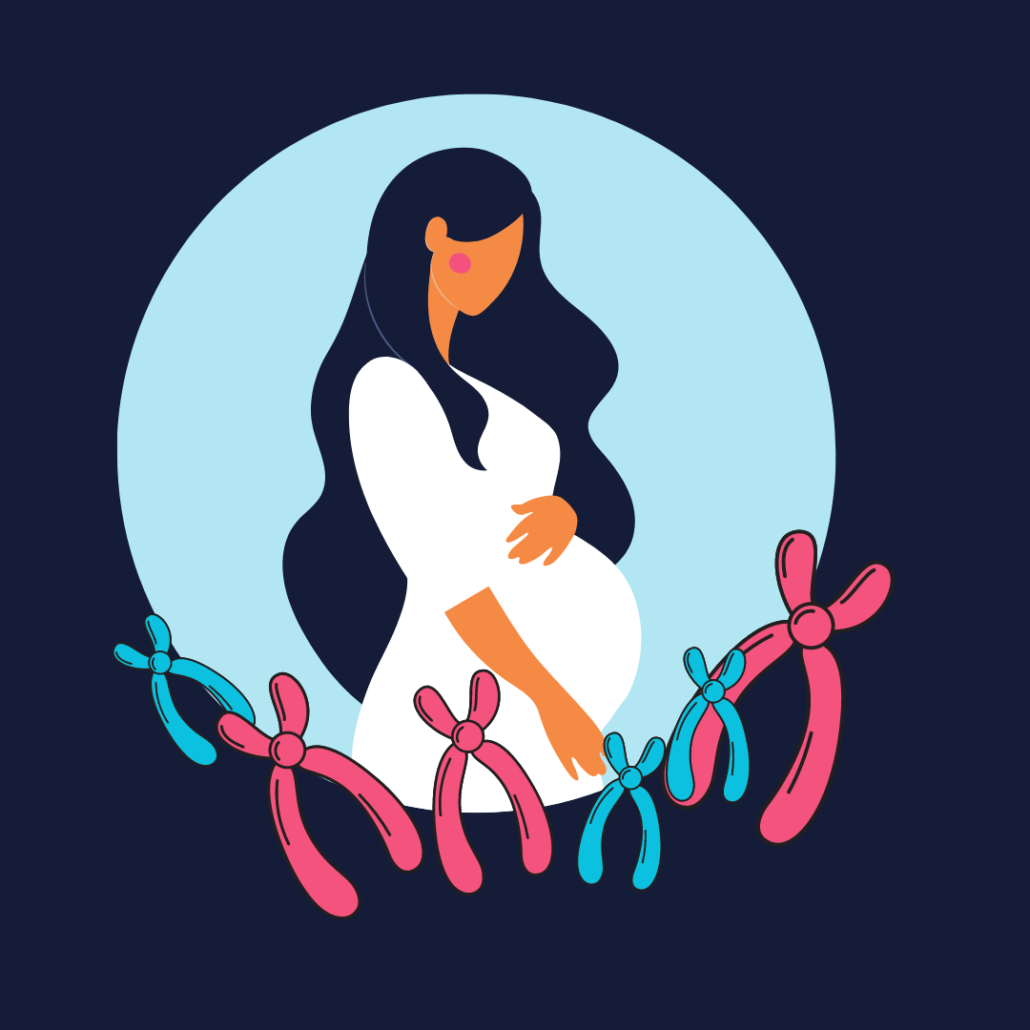Connected at the cellular level: fetal cells enter maternal tissues and stay for decades
I was recently reading Forever connected: the lifelong biological consequences of fetomaternal and maternofetal microchimerism (published in Clinical Chemistry, February 2021). This post contains my notes on the paper.
[Read similar information in non-technical language in the Smithsonian article “The New Science of Motherhood“]

The lifelong consequences of the exchange of cells between a mother and her child are profound and have many applications in development, health, and disease. This intricate exchange of genetically foreign cells creates a permanent connection that contributes to the survival of both individuals.
Diana Bianchi et al, Forever connected: the lifelong biological consequences of fetomaternal and maternofetal microchimerism, Clinical Chemistry, February 2021
Fetomaternal microchimerism
Fetomaternal microchimerism is defined as low levels of intact fetal cells that persist in maternal blood and tissues for years after pregnancy.
Where fetal cells are found in the mother
Maternal blood
Historically we thought the placenta was a barrier that kept fetal and maternal DNA separate, but it’s not the case. We can now detect fetal DNA in the woman’s bloodstream as early as 6 weeks gestation (4 weeks after fertilization). Fetal cells can also pass into maternal blood during or after a miscarriage, and after an abortion. Women who deliver by C-section end up with greater amounts of fetal cells in their blood than women who deliver vaginally.
Maternal organs
Fetal cells have been found in maternal kidneys, livers, hearts, thyroids, lungs, and skin. In fact fetal cells have been detected in practically all organs. In some research these cells were found in the mother decades after she gave birth.
Fetomaternal chimerism and maternal disease
As far as the specific role of fetal cells in relationship to maternal disease, research is ongoing. It could be that the presence of fetal cells causes problems, similar to host vs graft issues when an organ recipient’s body rejects the donated organ. But research has found fetal cells in similar amounts in women with and without disease, suggesting the cells are “unlikely to represent per se a risk factor for these diseases.” In fact it could be that the fetal cells are helping to fix problems. For example, one study suggested fetal cells are helping repair maternal tissue damage after women deliver via C-sections.
Repair of maternal tissue and organs
Since the discovery of fetal cells in pregnant and postpartum women, there’s been debate about the role of these cells, with researchers often suspecting the cells cause alloimmunity (the woman’s body rejects the cells). However, further research has shown fetal cells seem to transplant into maternal tissues and help with repairing injuries.
Pregnancy therefore results in the acquisition of cells with stem-cell-like properties that may influence maternal health post-partum. Rather than triggering disease, these cells may instead combat it.
Khosrotehrani and Bianchi, Multi-lineage potential of fetal cells in maternal tissue: a legacy in reverse, Journal of Cell Science, April 2005
Fetal cells appear to function in the mother as progenitor cells, meaning cells that can differentiate into different cell types. For example, hematopoietic progenitor cells can differentiate into different blood cell types (e.g. white blood cells, red blood cells, platelets). Lymphoid progenitor cells can differentiate into immune system cells which can produce different antibodies. Progenitor cells are potentially extremely useful because theoretically they can differentiate into a variety of cells the body system needs for repair. Research has suggested fetal cells can function as both hematopoietic and lymphoid progenitors, myeloid (bone marrow) progenitors, and endothelial (blood vessel lining) progenitors.
Entire blood vessels have formed from fetal microchimeric cells and were connected to maternal vessels.
Diana Bianchi et al, Forever connected: the lifelong biological consequences of fetomaternal and maternofetal microchimerism, Clinical Chemistry, February 2021
In some murine (mouse) research, fetal cells differentiated into endothelial cells and helped with forming new blood vessels, improving delayed maternal wound healing in pregnant or postpartum mice. No equivalent was observed in virgin mice. Other research on mice found fetal cells developed into neurons.
Maternofetal microchimerism
Maternofetal microchimerism results from the transfer of cells from the pregnant woman to her fetus.
Maternal cells in offspring tissue
Maternal cells have been identified in the heart, liver, lung, and brain of newborns, yes, but also adults. As with fetal cells in the mother, researchers debate whether maternal cells in the child trigger alloimmunity or help with repairing injuries.
One study suggested that maternal immune cells were causing graft-vs-host problems in infants with severe combined immunodeficiency. On the other hand, another study suggested a baby boy with severe combined immunodeficiency survived an Epstein-Barr infection because his mother’s immune cells gave him protection he wouldn’t otherwise have had. Research in mice has found that baby mice bred to be unable to produce certain immune cells on their own (B cells in one study, interleukin-2 in another) still had those immune cells originating from their mothers.
The authors point out that separate research is increasingly demonstrating mothers transfer protective antibodies to their newborns, and so it would be unsurprising if the intact maternal cells they’re finding in babies also function to “promote the maturation of neonatal immunity.”
Educating the fetal immune system
Levels of maternal cells in offspring may be “tunable” and able to “teach” the fetal immune system to tolerate maternal antigens. Alternatively, the fetal immune system may become more sensitized (more likely to mount an immune response) against maternal cells when there are problems. For example, some research suggests a correlation between PPROM (preterm premature rupture of membranes) and fetal immune response to maternal cells. PPROM often involves some kind of infection. It’s possible the fetus rejects the maternal cells from a mother with an infection, and in fact the fetal immune response could contribute to causing uterine contractions in preterm labor.
Long-term immune consequences for future pregnancies
Maternal microchimerism in one generation may reduce immune responses to a fetus in the next generation. There’s long been research showing Rh- negative women with Rh+ mothers have less immune response to the Rh antigen during pregnancy compared to Rh- women with Rh- mothers. In other words, Rh+ grandma helps Rh- mom’s immune system calm down a little in response to Rh+ baby.
Is it possible fetal cells from the first baby help the maternal immune system react less to subsequent pregnancies? Is that why some pregnancy complications (like preeclampsia) are much more common with first pregnancies than later? We’ll need more research to explore the implications of maternal “immunological memory” carried into future pregnancies.
Summary
We used to believe the placenta kept the fetus and pregnant woman more “separated” than is actually the case. We now know that fetal cells enter maternal systems and maternal cells enter fetal systems, and in both cases they can stay for years, even decades. It’s still not entirely clear what role these foreign cells play in their new environments, and it’s possible they can cause immune response problems. But increasingly research is suggesting fetal cells can aid in repair of maternal injuries, and maternal cells aid in fetal immune system development.
Whereas a mother and her child are undeniably forever connected in many ways, the studies presented here demonstrate that the connection exists at the most basic, granular, cellular level.
Diana Bianchi et al, Forever connected: the lifelong biological consequences of fetomaternal and maternofetal microchimerism, Clinical Chemistry, February 2021
In Video form
[Read more – Are embryos parasites?]



